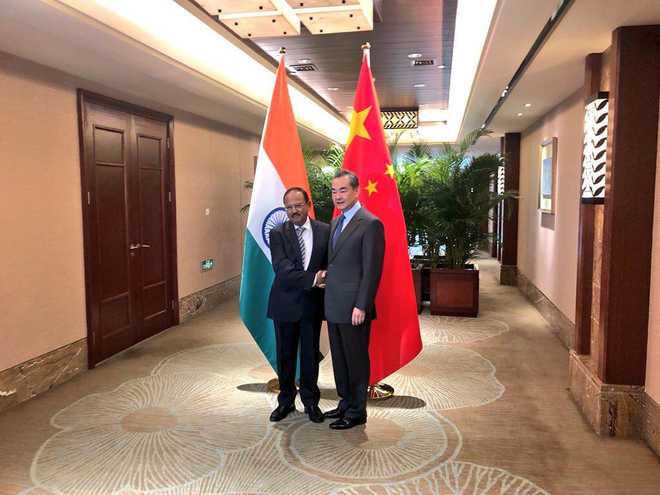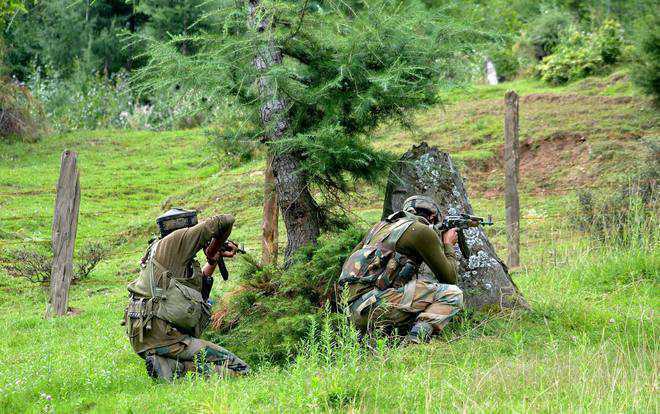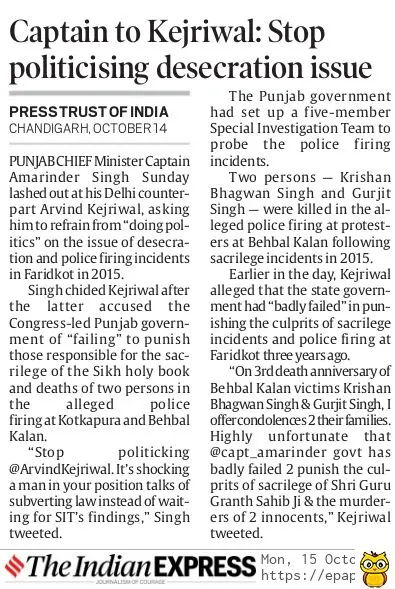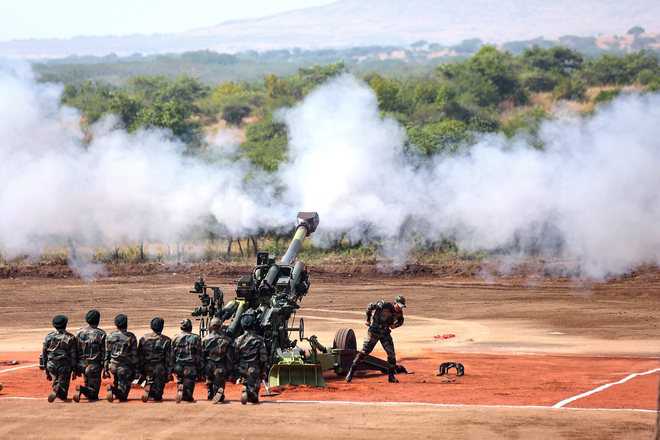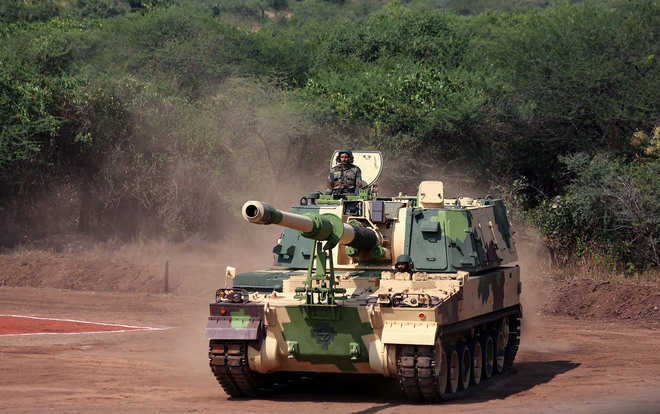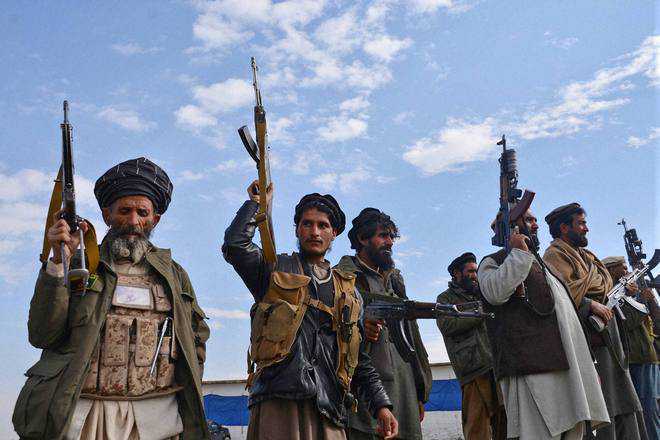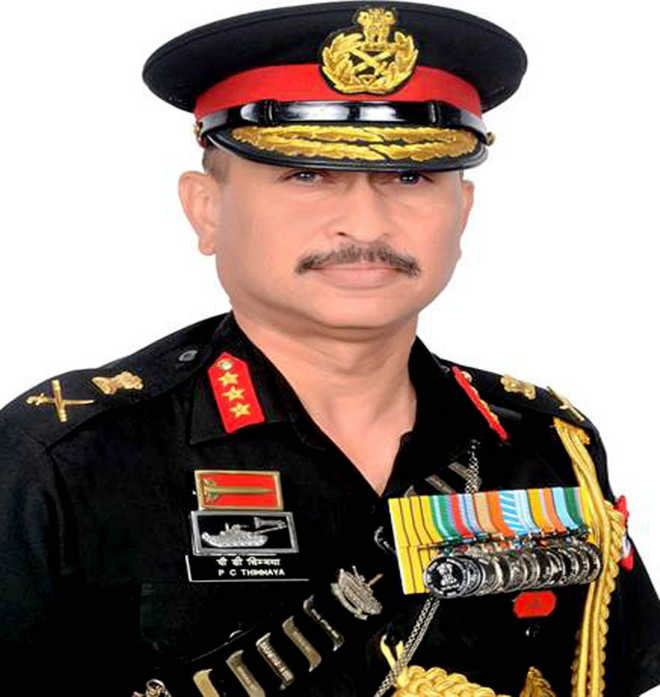
Capt launches campaign to plant 550 trees in every village
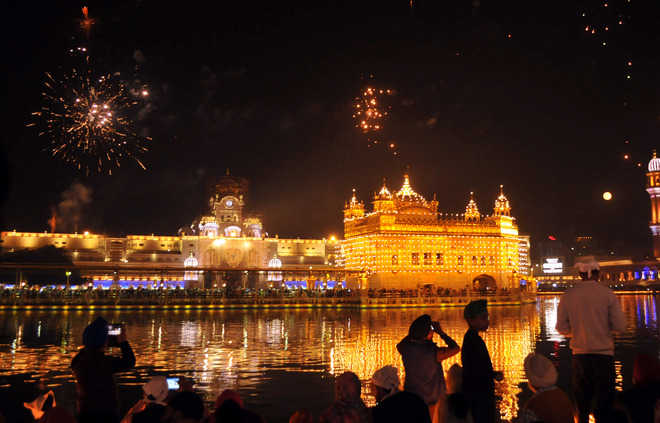
Deepkamal Kaur
Tribune News Service
Sultanpur Lodhi, November 23
Chief Minister Capt Amarinder Singh on Friday announced that his government was ready to contribute towards setting up the Kartarpur corridor.
The CM made the announcement during the launch of year-long celebrations to mark the 550th birth anniversary of Guru Nanak Dev here.
“A long-pending demand of Punjab will be on the verge of fulfillment on November 26, when I will join the President in laying the foundation stone for the corridor,” he said. He also thanked the Government of Pakistan for reciprocating on the issue.
Former Prime Minister Dr Manmohan Singh and Punjab Governor VP Singh Badnore joined Capt Amarinder in laying foundation stones for 26 development projects worth Rs 150 crore on Friday. The projects, initiated by him, include upgrade of infrastructure in three historic towns associated with the Guru — Sultanpur Lodhi, Dera Baba Nanak and Batala.
The CM said money would be no constraint for various development and welfare projects announced by him to ensure a befitting commemoration of the historic event. He also announced projects to the tune of Rs 3,312 crore to facilitate pilgrims. Release of 32 prisoners and remission of term for another 2,952 was also announced.
Launching a drive to plant 550 trees in every village, the CM also proposed to build a Sri Guru Nanak Dev Ji Marg, to be finalised by a group of experts. The foundation stones laid on the occasion are that of three bridges and two footover bridges (Rs 24 crore), a permanent bridge to replace pontoon bridge across Beas (Rs 13 crore), a new rest house (Rs 5 crore), widening of planned roads (Rs 42 crore) and repair of roads (Rs 38 crore). The CM said all these works would be completed by July 2019.
Capt Amarinder also announced Sarbat Sehat Bima Yojana, under which 43 lakh families would be brought under insurance cover of Rs 5 lakh at a cost of Rs 371 crore from January 1, 2019. An institute of inter-faith studies would be set up at Guru Nanak Dev University (GNDU), Amritsar (Rs 510 crore), while ‘Pind Babe Nanak Da’ museum would be established at Sultanpur Lodhi, said the CM. He also announced Bebe Nanki College for Girls in Mahablipur village, 5 km from Sultanpur Lodhi.
A government medical college and super-specialty hospital would be established at Kotli Nangal village in Gurdaspur for Rs 400 crore in PPP mode (to be completed by 2021), and Sri Guru Nanak Dev ji Centre for Invention, Innovation, Incubation and Training would be established as a hub on the main campus of Indra Kumar Gujral Punjab Technical University at Kapurthala, the CM said.
Stone to be laid near ‘darshan asthan’ at Dera Baba Nanak
NOV 26 EVENT State govt holds meeting to take stock of preparations for the President’s visit; minister Randhawa does not rule out making existing 1.7km passage from town to darshan asthan a part of corridor
AMRITSAR/BATALA: The foundation stone of the much-awaited corridor to Kartarpur Sahib will be laid near the ‘darshan asthan’, along the international border in Indian territory at Dera Baba Nanak, the state government said on Friday.
HT FILEA devotee paying obeisance by having a look at Gurdwara Kartarpur Sahib in Pakistan through a binocular at the IndoPak border in Dera Baba Nanak of Gurdaspur district in August this year.
WHILE THE SPOT FOR FOUNDATION STONE WAS FINALISED, REST OF THE PLAN WILL BE MADE BY UNION GOVT; A CENTRAL TEAM TO BE VISIT DERA BABA NANAK SOON
President Ram Nath Kovind is to lay the foundation stone, at the spot from where devotees watch the holy shrine from a binocular, on November 26.
The decision comes a day after India and Pakistan announced that they will build a corridor on their respective sides to let Sikh pilgrims visit the iconic Gurdwara Darbar Sahib in Kartarpur on the banks of the river Ravi in the neighbouring country. The three-km corridor has been a long-pending demand of the Sikh community.
Punjab jails minister Sukhjinder Singh Randhawa chaired a meeting on the arrangements with officials of the Gurdaspur administration, the Border Security Force (BSF) and the officials of the National Highways Authority of India (NHAI) on Friday. Gurdaspur deputy commissioner Vipul Ujjwal told HT, “The venue of the pandal and the spot for the foundation stone have been finalised and the rest of the plan will be made by the union government. A Central team will be visiting Dera Baba Nanak.”
Randhawa did not rule out the possibility of converting the existing passage from Dera Baba Nanak town to the ‘darshan sthal’ at the border, a distance of 1.7 km, as part of the corridor.
However, this will require both the countries to be in agreement. The existing passage is 22 foot wide.
“In case, this passage is converted to a part of the corridor, it would be widened to 56 foot and beautified,” the minister added. On the Shiromani Gurdwara Parbandhak Committee (SGPC) offering to construct the corridor on its own expense, Randhawa said, “No government will give such an assignment to any non-government body.”
On August 27, the Punjab assembly, led by chief minister Amarinder Singh, had unanimously passed a resolution asking the Central government to pursue with Pakistan the issue of opening of the Kartarpur Sahib corridor during the 550th birthday celebrations of the first Sikh master, Guru Nanak.











